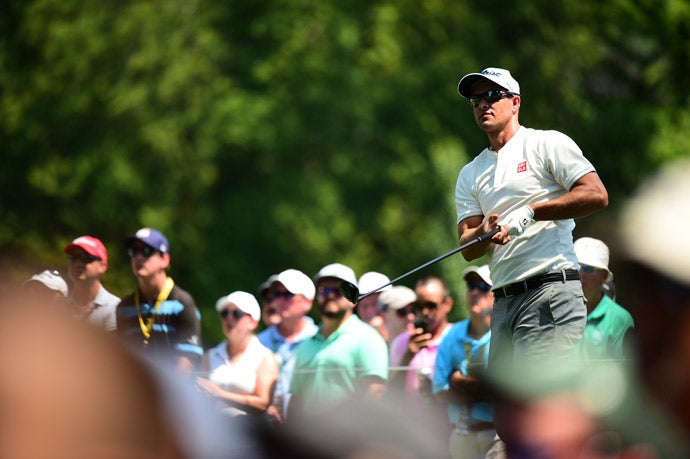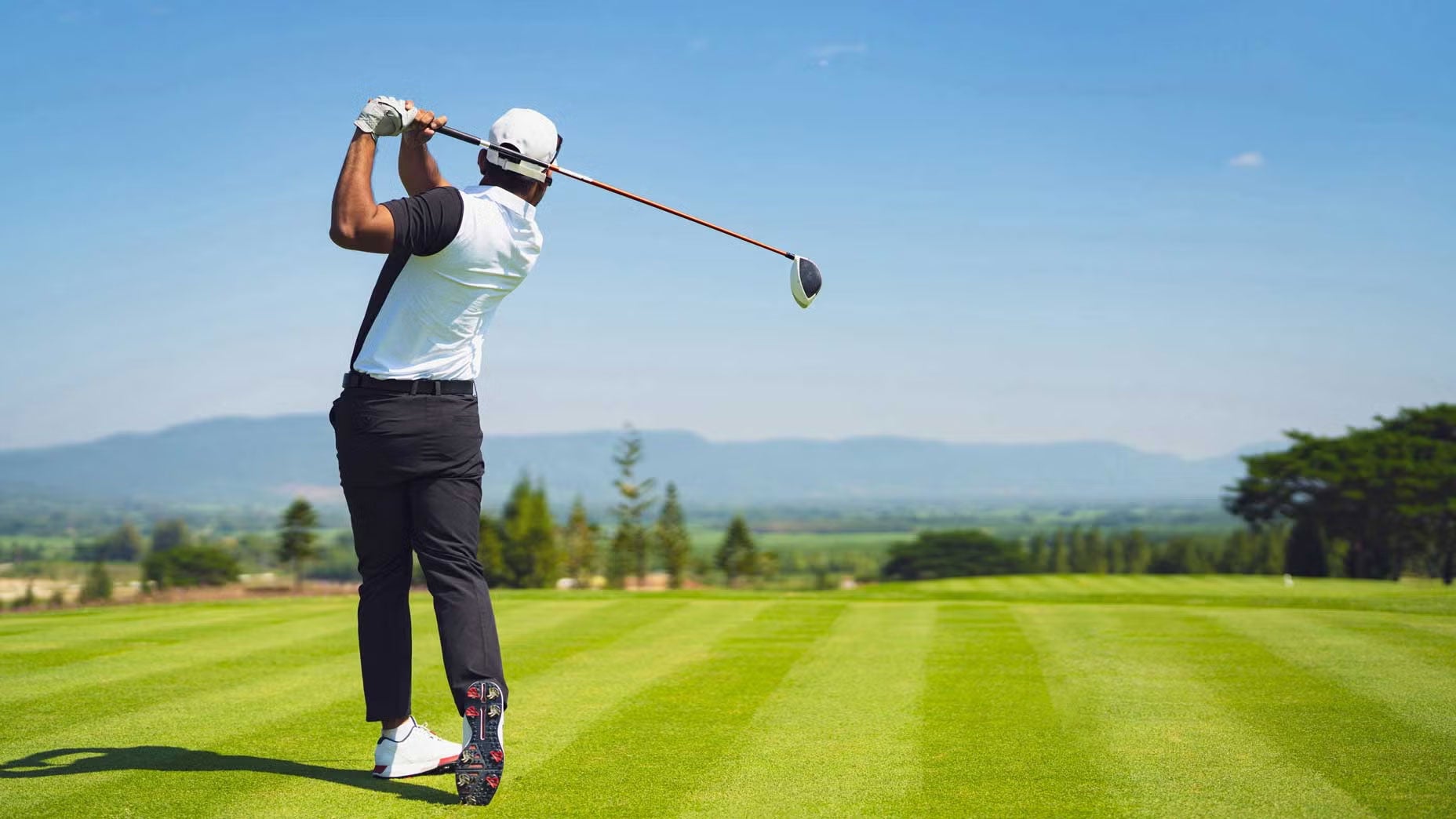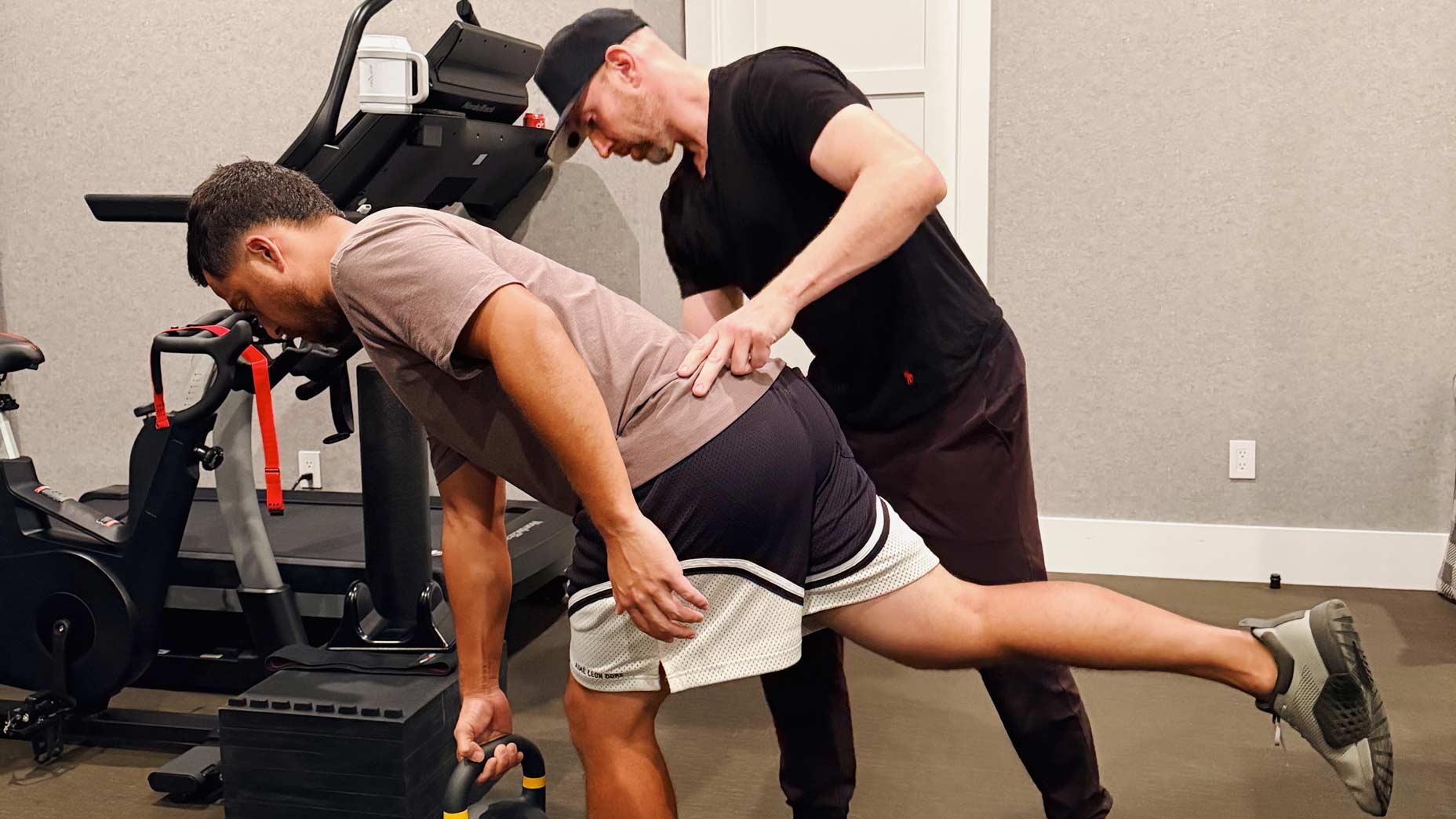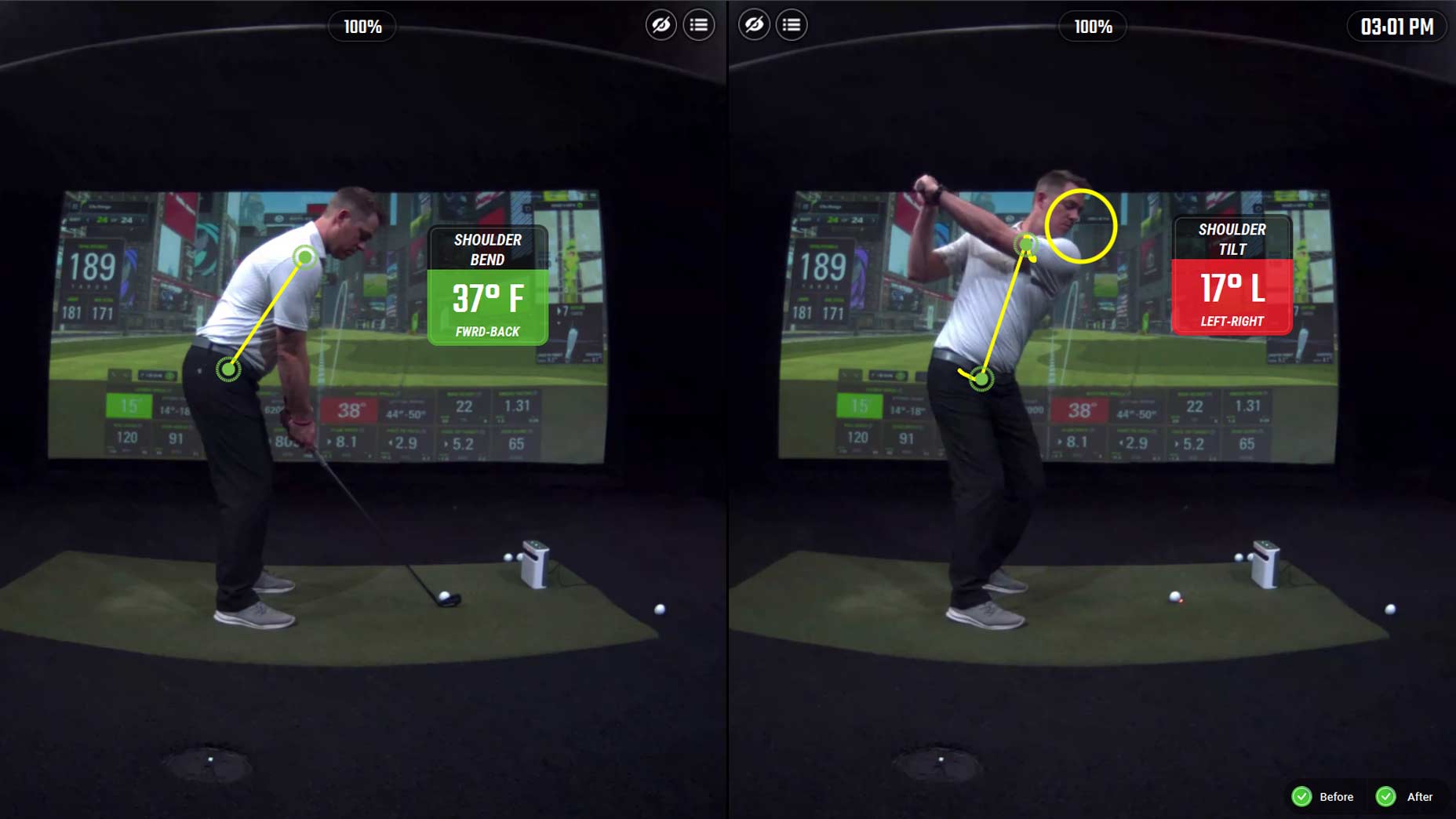I lost my young-gun status years ago, yet I’m driving it farther than ever. My secret? A solid setup that lets me max out my turn and launch it. Follow my lead—and prepare for liftoff.
MY SETUP
I’m hitting it about 15 yards longer now than I was a few years ago. Credit goes to my address position, which I’ve tweaked to produce more power.
Last year, nearly 70 percent of my drives broke the 300-yard barrier. In 2013 that number was 50. Obviously, I made some changes that boosted my driving, the easiest of which was finding a driver/club combination at the start of the 2015 season that improved my launch conditions. Extra yards are out there, through even a basic fitting.
The other thing that really helped was tightening up my address position. I’ve always had good posture, but my coach, Brad Malone, and I thought I was losing some of my angles at setup, especially in my hips. For maximum rotation and speed creation, your hips need to tilt forward at address. (Think “belt buckle pointed toward the ball.”) When you see me on TV doing my pre-shot routine, you might notice me pushing my rear end forward and then back out—that’s how I lock my hips into position. Try it—you’ll instantly feel more athletic. Better yet, the move frees up your spine while silencing your lower body. That’s the power-rich coil every player craves. So copy what you see here. Stats don’t lie—these address-position keys can hand you yards in a hurry.
ARMS: Loose and dangling, yet slightly tucked against the sides of your torso.
HIPS (KEY MOVE!): Tilted forward, so your belt buckle points toward the ball. This doesn’t mean bend forward—stick out your butt and actively tilt your hips.
SHAFT: Point it at your belt buckle. This will help you stand the correct distance from the ball so you can swing freely through impact.
HANDS: With driver, set them far enough away from your body for the butt of the grip to sit just outside your toe line.
FEET: I like them shoulder-width apart, which gives me stability and freedom to turn.
NECK: In line with your spine. Avoid lifting your chin.
BACK: Nice and straight. No curve at the base or “hump” at top.
KNEES: Flexed (not bent) enough so that you feel as though your feet are sinking into the ground.

MY BACKSWING CHECK
Driving it longer doesn’t help if the ball lands in a hazard. Here’s how to hit it deep and straight.
We big hitters miss our fair share of fairways, but last season I was in the top 15 in Total Driving (the stat that combines distance and accuracy), and the year before that I had a top-10 finish. Controlling the clubface is the key. This drill helps: At address, picture the arc that the clubhead travels on in your entire backswing—make it a bright, thick line. Your goal? Keep the clubface square to the clubhead path from start to finish. In practice, I stop my swing and look back at the clubhead to make sure this is happening, as I’m doing in the photo below. If you have difficulty, you’re probably moving too many parts at once. Take the club back by moving your shoulders, chest, arms, hands and club as a single unit. A “one-piece” takeaway is the secret to on-plane swings.
ONE PIECE, HUNDREDS OF YARDS: In your takeaway, avoid a lifting or snatching move, and don’t unduly cock your wrists. Move your body and club as a single piece. This helps you stay on plane and better control the clubface for square strikes.

MY SWING THOUGHT
At the top, I picture my perfect finish position. My only goal on the downswing is to get there.
You hear a lot about “firing your hips” to start the downswing. I favor “firing your shoulders.” For one, even those with moderate athletic ability will instinctively “fire” the hips—it’s a natural hitting impulse. But when you think of where your upper body needs to be at the finish—with your chest facing left of the target and your right shoulder ahead of your left—the upper body has work to do. So from the top my mantra is “Turn your shoulders, Adam!” And don’t worry about “coming over the top”; a full shoulder turn—rather than simply lifting your arms—takes care of that. Just assertively rotate your upper body through impact and let the ball get in the way. It won’t know what hit it.
IT’S A TURN, NOT A HIT: Don’t stop rotating at impact! That’s a slicer’s move. Keep turning your body until you reach your finish, let the ball get in the way—and watch it soar!







